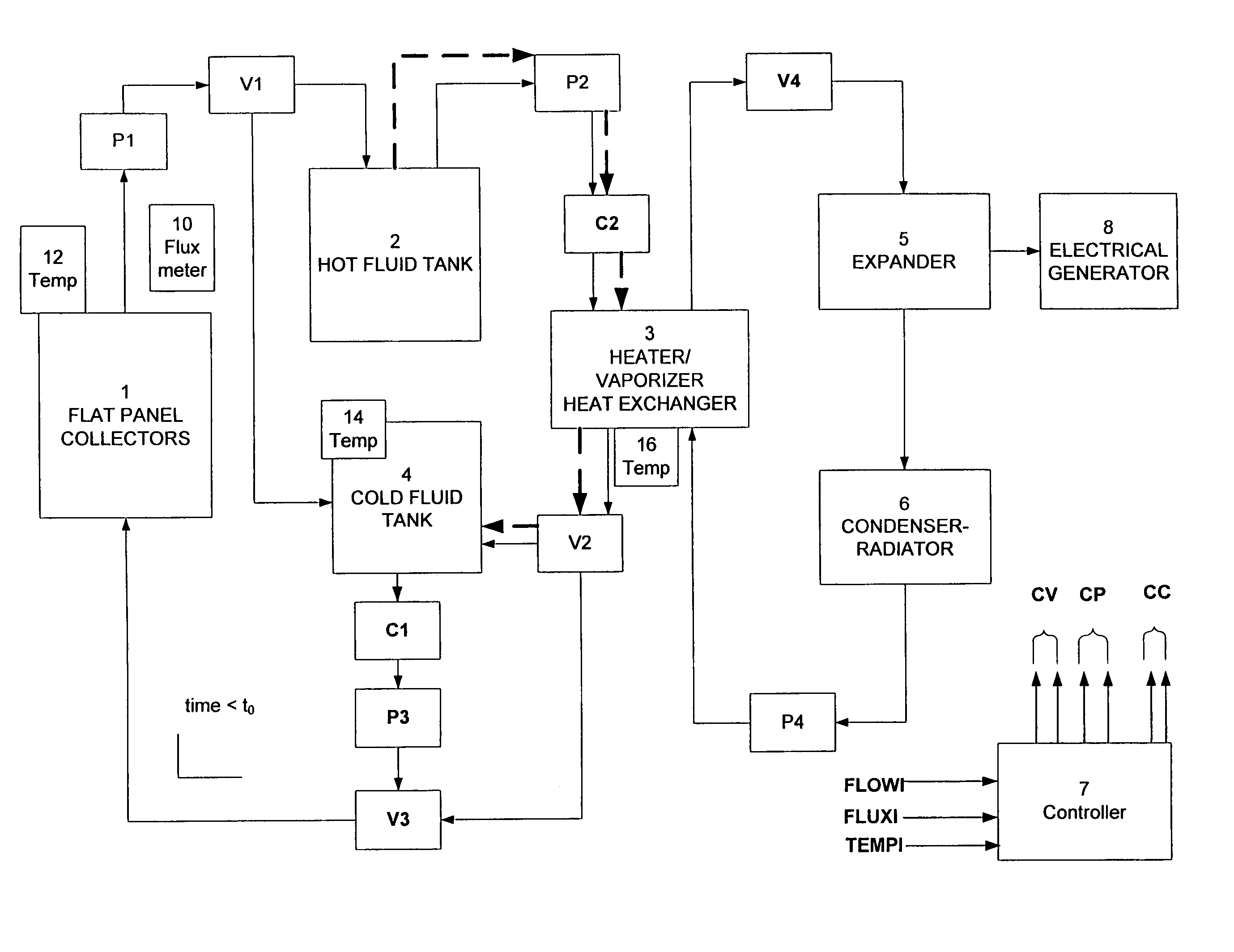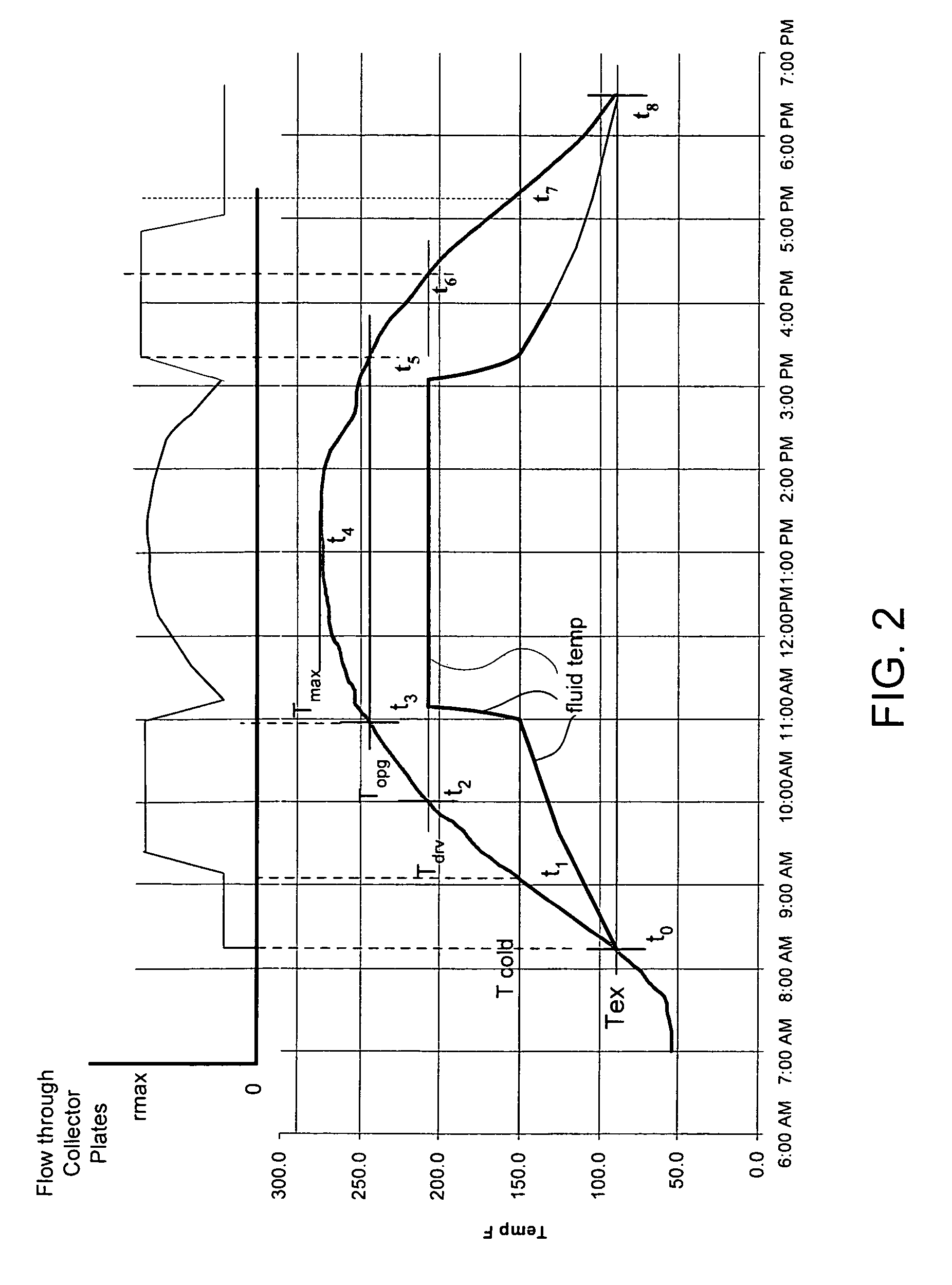AutoSolar Thermal Electric Conversion (ASTEC) solar power system
a solar power system and solar thermal technology, applied in the direction of machine/engine, steam generation using solar heat, transportation and packaging, etc., can solve the problems of inability to provide low-cost power to the consumers of this or any other nation, inherently so expensive, and all are utterly incapable of competing economically with conventional power plants and heat-power systems. achieve the effect of high efficiency, advanced technical performance and cheap production
- Summary
- Abstract
- Description
- Claims
- Application Information
AI Technical Summary
Benefits of technology
Problems solved by technology
Method used
Image
Examples
Embodiment Construction
Solar Insolation, Absorption and Capture Efficiency
[0026]Data have been taken over many years for solar insolation in the US. It has been found that areas with the highest solar flux / fluence are in the Southwest, including Southern California, Arizona, New. Mexico and parts of Texas. Here, measurements show that the total solar energy fluence (Fo) incident on a surface perpendicular (normal) to the sun during the daylight hours (requires turning the incident surface to make this measurement) varies from about F0=10 kWthhrs / m2 in the summer (June) months to F0=5 k Wthhrs / m2 in the winter (December). For design purposes for the ASTEC system solar power system, the average normal summer insolation has been taken as Fos=9.6 kWthhr / rn2 and that in the winter as Fow=4.8 kWthhr / m2.
[0027]Realistic economic considerations make tracking collectors impractical, as the increased collection achieved is generally not worth the considerable cost of the tracking and mounting systems, flexible pipin...
PUM
 Login to View More
Login to View More Abstract
Description
Claims
Application Information
 Login to View More
Login to View More - R&D
- Intellectual Property
- Life Sciences
- Materials
- Tech Scout
- Unparalleled Data Quality
- Higher Quality Content
- 60% Fewer Hallucinations
Browse by: Latest US Patents, China's latest patents, Technical Efficacy Thesaurus, Application Domain, Technology Topic, Popular Technical Reports.
© 2025 PatSnap. All rights reserved.Legal|Privacy policy|Modern Slavery Act Transparency Statement|Sitemap|About US| Contact US: help@patsnap.com



